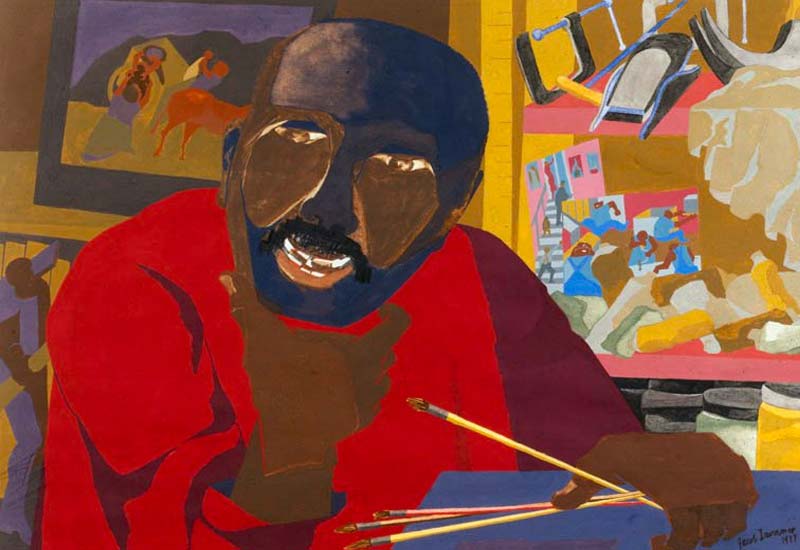
A century of Jacob Lawrence calls for celebration, with today marking what would have been the painter and storyteller’s 100th birthday. Regarded as one of the most significant artists of the 20th century, Lawrence was well known for his contemporary and vibrant depictions of everyday life, heavily inspired by his home in Harlem. Here, in retrospect, we take a look at the everlasting cultural and political impact from some of Jacob Lawrence’s most prominent works.
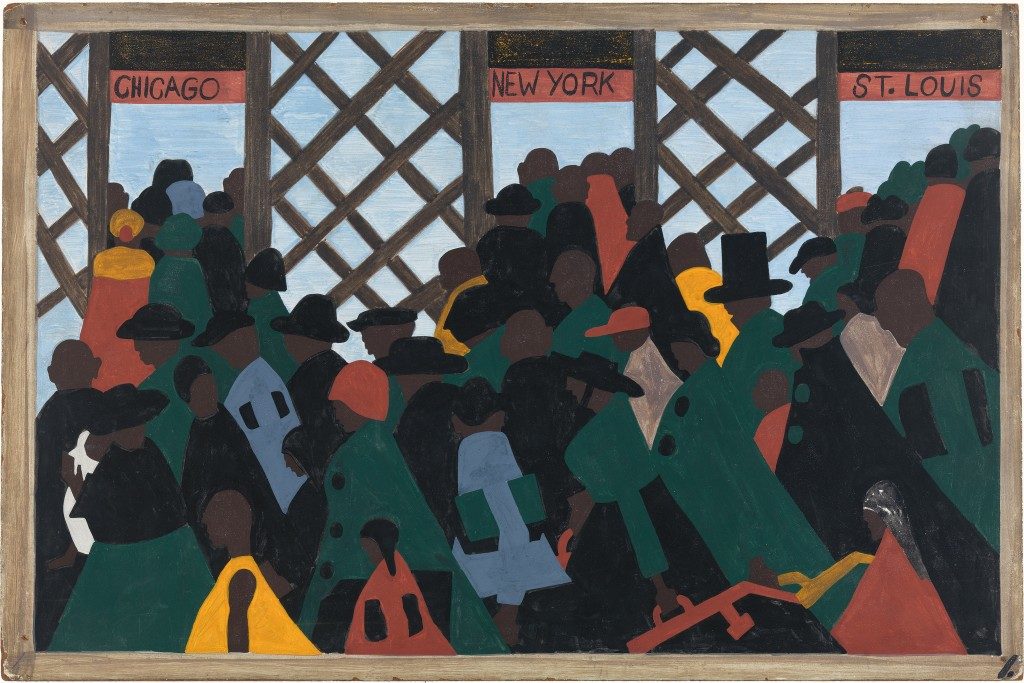
During the World War there was a great migration
North by Southern Negroes. (1940–41)
Beginning with his most famous works, The Migration of the Negro is composed of 60 panels, each uniquely depicting the migration of Black Americans from the North to the South in the early 20th century. Filled with unmatched imagery and deep sentiment, the works indeed stemmed from an emotional place, as Lawrence’s family also participated in the Great Migration.
The series begins with “During the World War there was a great migration North by Southern Negroes,” and ends with, “And the migrants kept coming.” Although each panel can stand on its own, Lawrence never intended for the works to do so, as he viewed the series as a single work. In fact, he worked on all paintings simultaneously, applying a single color to several works in progress, repeating this production-line process until the paintings were collectively completed.
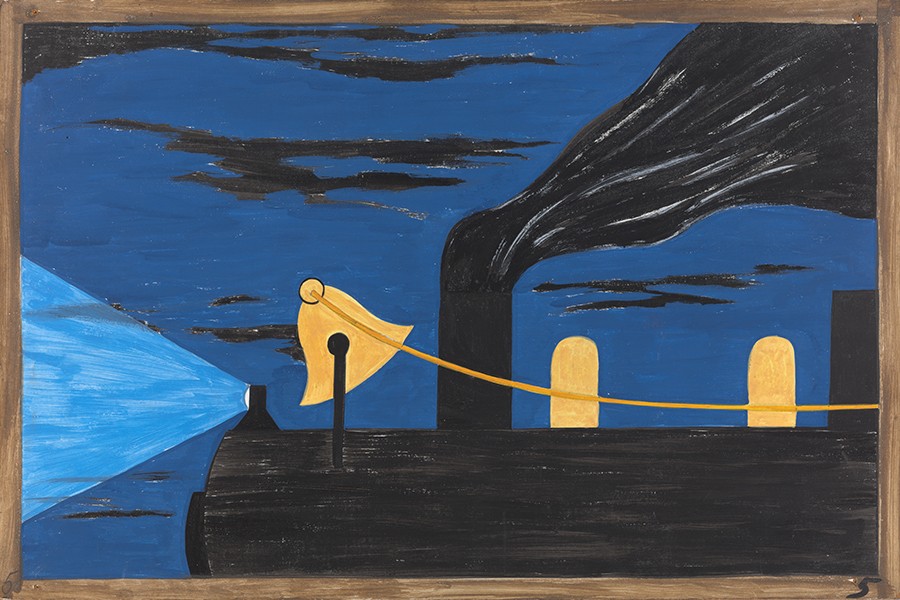
5 Migrants were advanced passage on the railroads, paid for
by northern industry. Northern industry was to be repaid
by the migrants out of their future wages. (1940–41)
It is a series of flat planes, strong diagonals, and silhouette figures. Yet, the dynamism and rhythm within each painting successfully captures the spirit of the times. And though Lawrence used a fixed palette, his careful arrangement of colors leads viewers to particular focal points that are quite difficult to look away from.
What is perhaps the most intriguing about The Migration of the Negro is the narrative. As one advances through the 60 panels, the compositions, focal points, and details begin to shift, taking the viewer on an experience comparable to watching a film. In some panels, figures are dominant. In others, the landscape is. And with each painting accompanied by a detailed caption, viewers are honored with the true range of Lawrence’s storytelling.
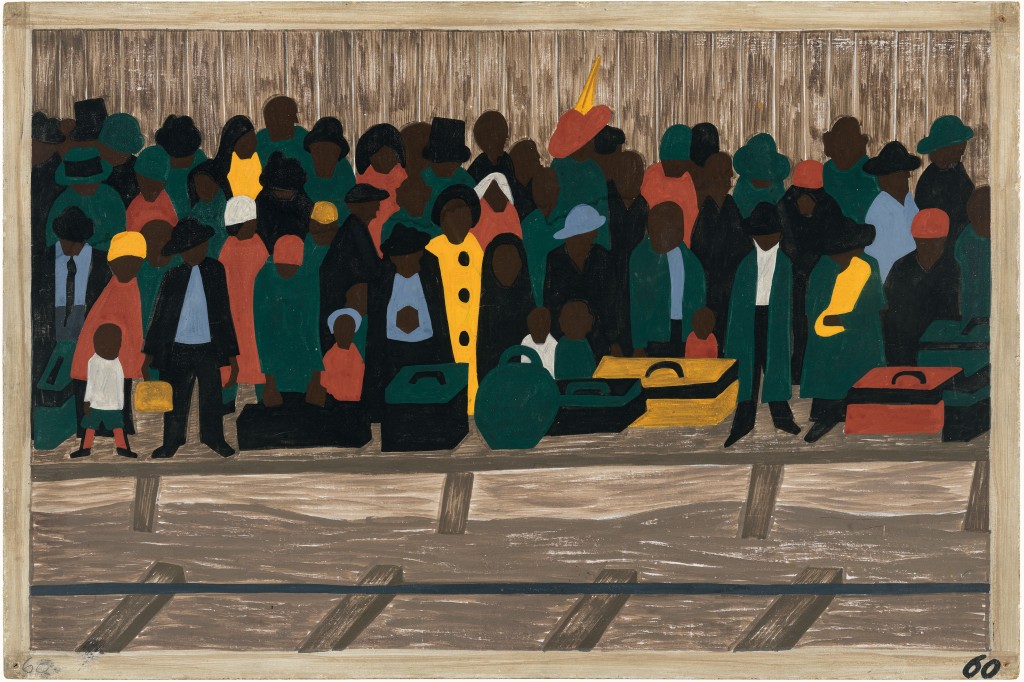
And the migrants kept coming. (1940–41)
Jacob Lawrence often emphasized the vital role that the Black community of Harlem played in his development, both as a young man and as an artist. In his images of Harlem, subject matters included racial tensions, poverty, crime, and police brutality, a reflection of urban life that surrounded him. And yet, as shown in Brownstones (1958), Lawrence also portrayed a vibrant, thriving Harlem and the everyday life of its people.
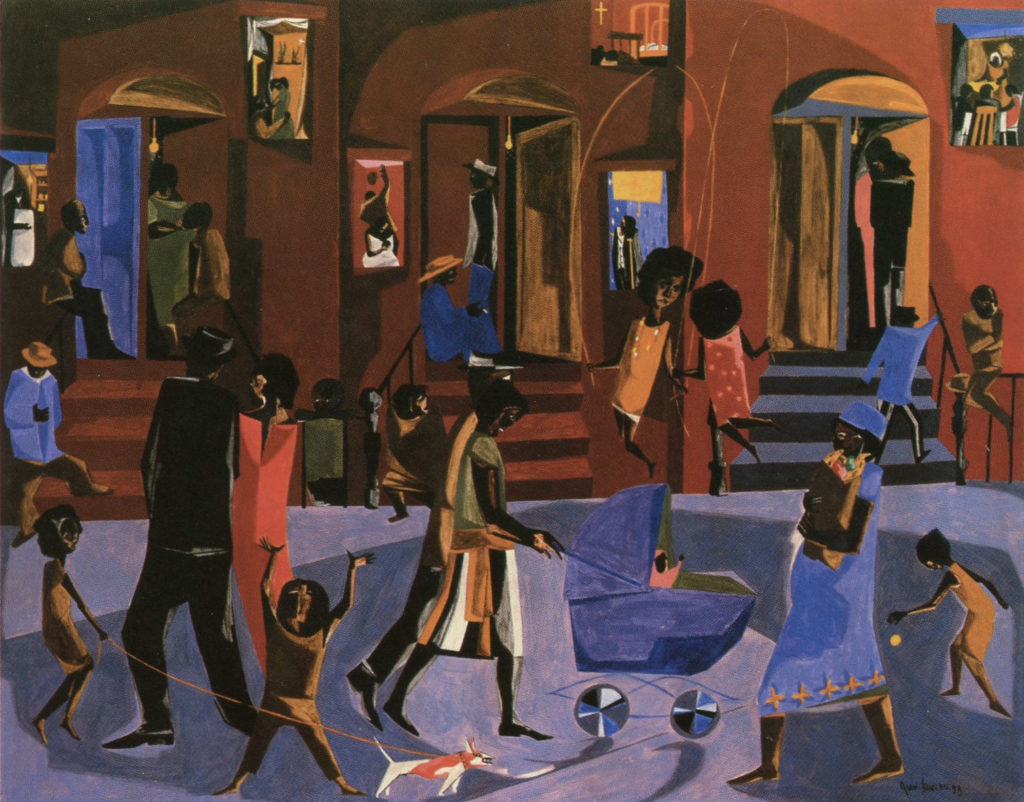
Brownstones (1958)
As stated by The New York Times following his death in 2000, Jacob Lawrence is “one of America’s leading modern figurative painters and among the most impassioned visual chroniclers of the African American experience.” Today, Lawrence’s artwork remains a backdrop to stir some of the most overdue and necessary conversations of our time.
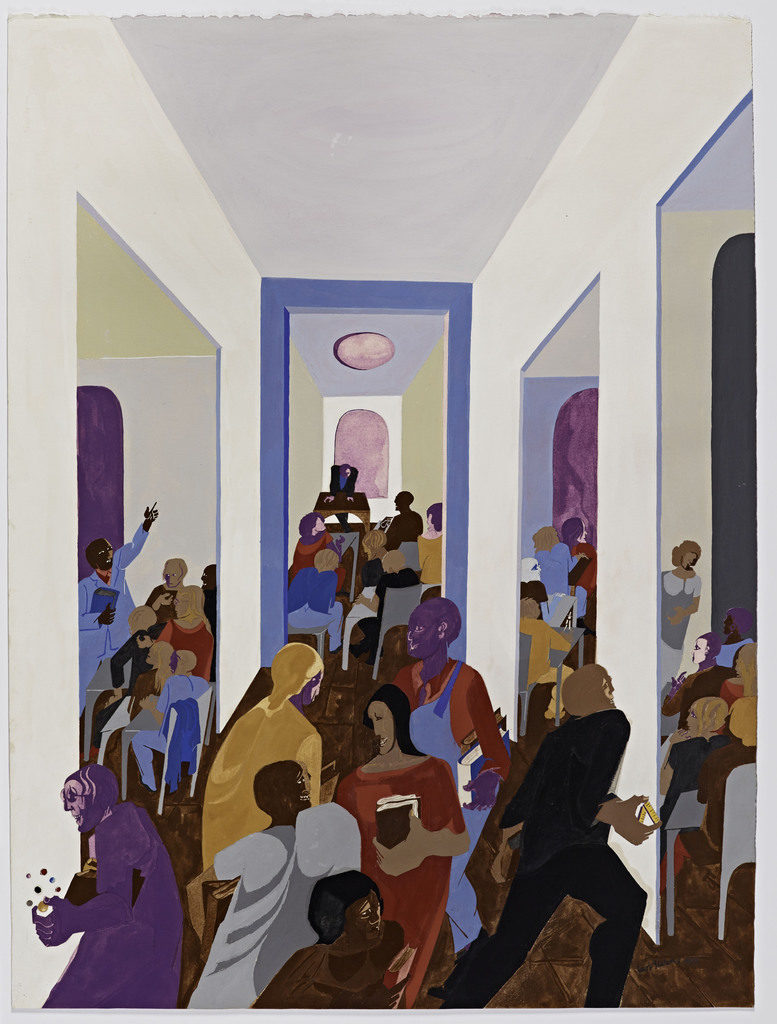
University (1977)






